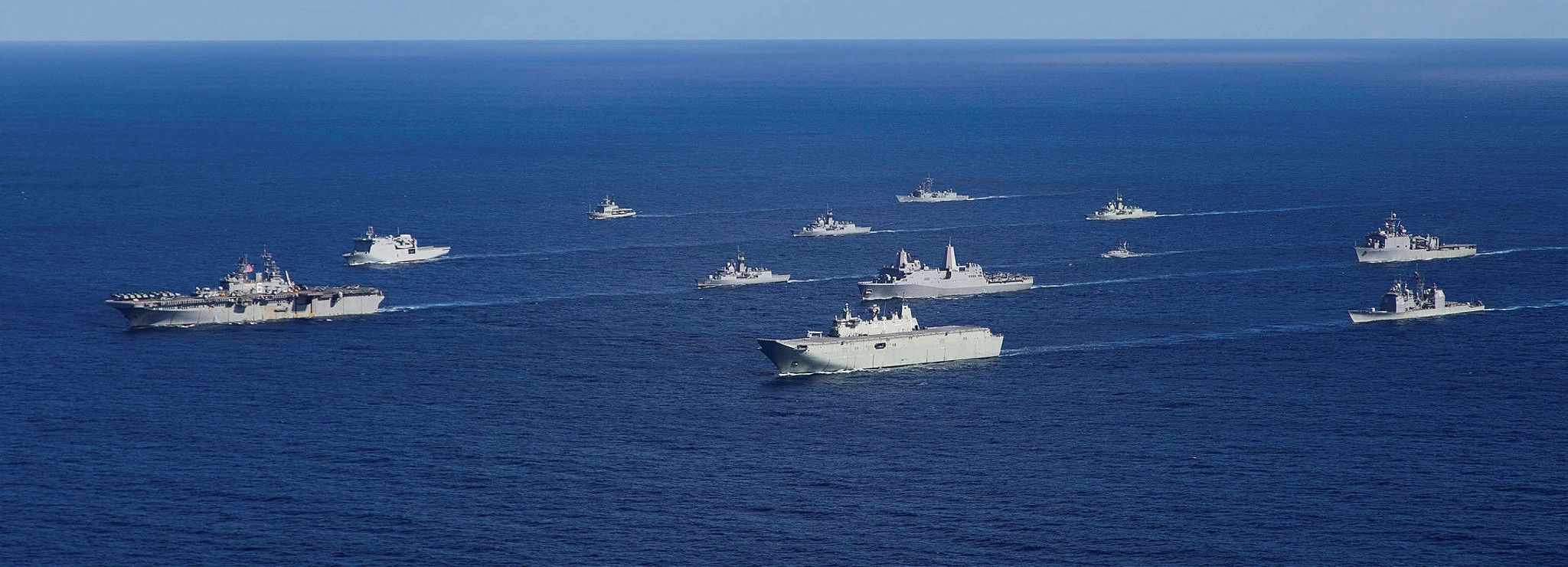Last month a combined force from five allied nations, including a fleet of 33 warships and submarines, over 200 aircraft and more than 33,000 military personnel, defeated an ‘enemy force’ in 20 locations across northern Australia.
The enemy, of course, was an imaginary one and the battle was a military exercise, Talisman Sabre 17, but its successful conclusion raises some interesting questions about future co-operation between the US, Australia and New Zealand.
For Australia and New Zealand, this was the most significant Talisman Sabre since the series of exercises began in 2005. It was the first time the Australian Defence Force (ADF) successfully lodged a combined-arms battlegroup, based on an infantry battalion with tanks and Bushmaster vehicles attached, from a Canberra class amphibious assault ship and logistically sustained it across the shore in a mid-intensity conflict scenario. New Zealand provided ground troops as well as integrating the multi-role vessel HMNZS Canterbury into the Amphibious Task Group.

For the first time, the combined amphibious force was comprised of ships from the US, Australia and New Zealand. It is tempting to see in this development another step along the road that could one day return New Zealand to the ANZUS alliance.
For the first time, the combined amphibious force was comprised of ships from the US, Australia and New Zealand.
The argument whether middle sized countries such as Australia or New Zealand punch above their weight is so common that it is almost a cliché. But it doesn’t sit well with everyone. Dennis Richardson, the recently retired Defence Secretary, scorned the notion when he spoke at the Lowy Institute recently, deriding it as a lazy presentation of national interest. Turning the phrase on its head, he stated: 'I think we should be asking ourselves whether we punch up to our weight.'
From a national perspective, Talisman Sabre is a useful barometer. If the ADF was forced to act unilaterally, it could deploy an amphibious battle-group for a RAMSI-style intervention to stabilise a neighbouring country. It is yet to demonstrate, however, that it can successfully conduct the amphibious lodgement of a combat brigade and sustain it over the horizon for any length of time. The Army has organised itself around the combat brigade: a balanced, fighting unit that provides both the lethal capability and protection required in modern war. To punch to its weight, Australia needs to be able to deploy a force this size within the immediate region. Proving it can do so should be the goal of Talisman Sabre 19.
- The Future of the Five Power Defense Arrangements
- Defence Capability 2019 – reading between the lines
- Why do I think the Endurance 170 LHD is a good choice for the RNZN.
- NZDF Joining Multi-National Military Exercise in Australia
More concerning is the lack of air cover which an Australian amphibious force would need in the event of an air threat. Even the most ardent supporter of the Joint Strike Fighter acknowledges that its operating range is a potential concern. The tyranny of distance that characterises the regions of the South Pacific and South-East Asia amplifies this limitation. Either Australia is going to have to develop a strategy of developing, maintaining and operating from forward airbases pre-established in friendly nations throughout the region, or it will need to rely on the United States Navy to provide air cover through a carrier strike group. And herein lies the real story behind this year’s exercise.
Talisman Sabre saw the successful integration of Australian, US and New Zealand forces to form a combined amphibious task group, supported by air and surface fleet combatants, that would be able to operate in all but the most contested of environments. While Australian and the US have done this before, New Zealand provided a significant contribution in only its second attendance at the exercise. Viewed alongside the recent attachment of a New Zealand frigate to a US Carrier Strike Group, there are signs that the relations between New Zealand and the US are the warmest they have been since the US suspended its security obligations to New Zealand under the ANZUS treaty in 1986.
The most likely deployment of an amphibious force would be within the South Pacific or along the maritime trade routes on which both Australia and New Zealand rely. Combining the capabilities of Australia, New Zealand and the US would make political as well as military sense. Therefore, the question should not be whether Australia or New Zealand are punching to their weight, but whether a renewed tripartite ANZUS alliance would be able to. Talisman Sabre 17 would suggest the answer is yes.

